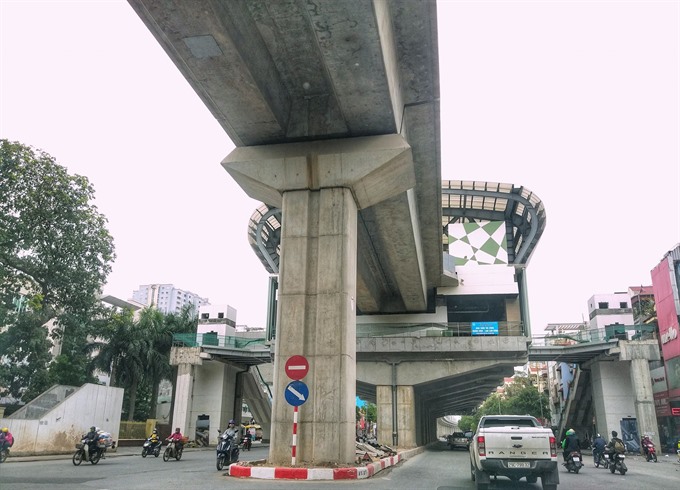 Society
Society

Experts and businesses said the capital city has been leading the country in attracting investment for traffic related infrastructure, said Kinh Tế &Đô Thị (Economy & City) Newspaper.
 |
| A section of the Cát Linh - Hà Đông urban railway in Hà Nội. — VNS Photo Đoàn Tùng |
HÀ NỘI — Experts and businesses said the capital city has been leading the country in attracting investment for traffic-related infrastructure, said Kinh Tế &Đô Thị (Economic and Urban Affairs) Newspaper.
However, there are still many shortcomings that need to be solved. Car parking areas, in particular, must be invested in.
Hà Nội is facing a shortage of car parking spaces. At present, the city has met just 10-15 per cent of demand for car parking spaces. Building this critical infrastructure will require capital from private investors, as the municipal budget cannot accommodate the demand.
Investment from the private sector in recent years has failed to meet expectations.
Phan Trường Thành, an expert on urban management, said that private investors were cautious about investing in this area, as the city hadn’t made detailed future plans on static traffic works.
“Investors were worried that their car parking areas might be affected by other urban plans,” said Thành.
Besides, ground clearance and complicated legal procedures were also challenges to investors, he added.
Meanwhile, many investors raised concerns about capital returns of static traffic works, the paper said.
At present, the proportion of land areas used for car parking spaces is 30 per cent. Investors thought that the modest percentage would not allow them to make money back quickly enough.
According to Đinh Quốc Thái, another expert on urban management, the initial investment for static traffic works, especially underground car parking spaces, is substantial.
“It might be trillions of đồng, while it could take decades to see the investment returned if investors just collect parking fees, or do other services on small land areas in the car parking spaces”, Thái said.
Positive signs
In the last two years, the municipal authority has granted incentives for investors to develop static traffic works, Thành said.
The city has made lists of projects which could help investors in choosing where they want to put their money. The city’s masterplan for static traffic works will be approved in the third quarter of this year and will help to lift current shortcomings of car parking projects.
Additionally, the city will also consider adjusting regulations on performing other services in car parking areas to speed up the return of capital back to investors.
“At present, parking fees have been gradually approaching the market price. This is gradually attracting more investors”, said vice president of Đông Dương Group, Nguyễn Thị Bảo Quỳnh.
Thái agreed with Quỳnh, adding that car parking projects are classified as real estate projects which are subject to strict requirements when it comes to applying for bank loans.
So, the proper parking fee rates will be an advantage to investors looking to take out loans from the bank, Thái said.
“The city should ask the central government to focus on policies that attract investment into static traffic works, which are very costly but urgent to the city’s development”, said Thành.
So far the common trend has been to limit personal vehicles in the inner city, to reduce traffic jams and air pollution. Thus, along with building car parking areas, the city should promote models of static traffic such as transit-oriented development (TOD) whereby the focus shifts to public transport, as well as park and ride, which are car parks connected to public transport, Thành suggested. —VNS




